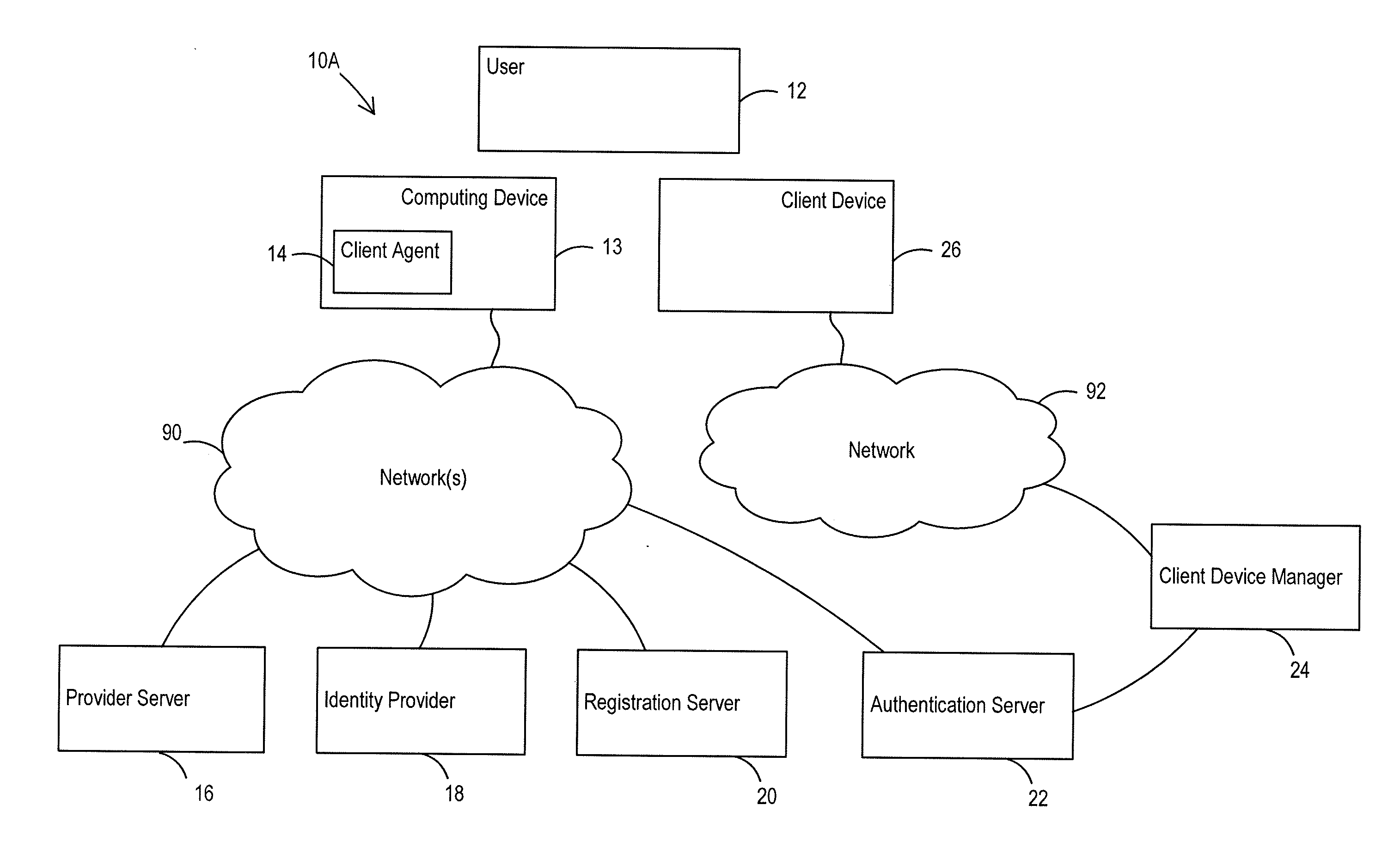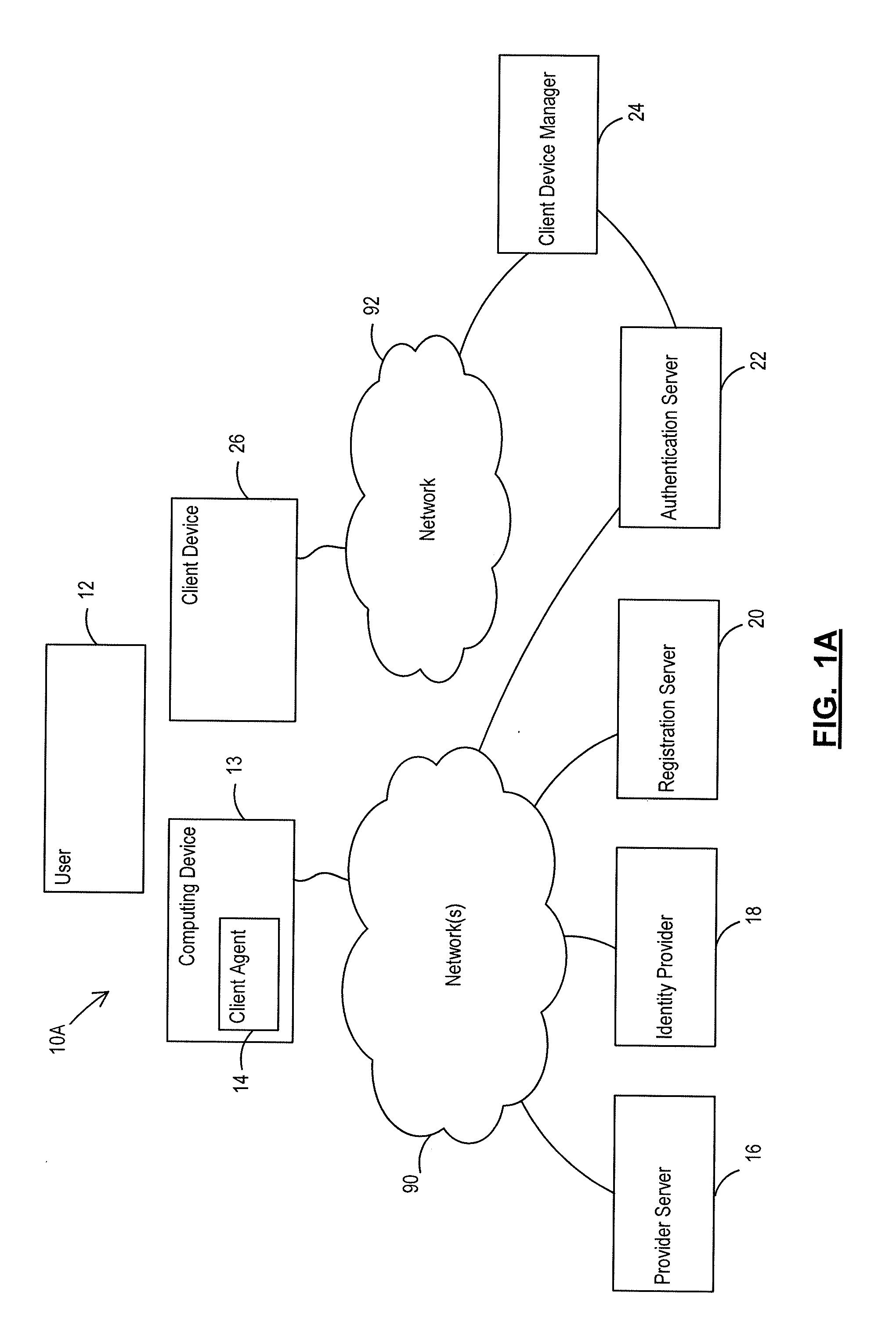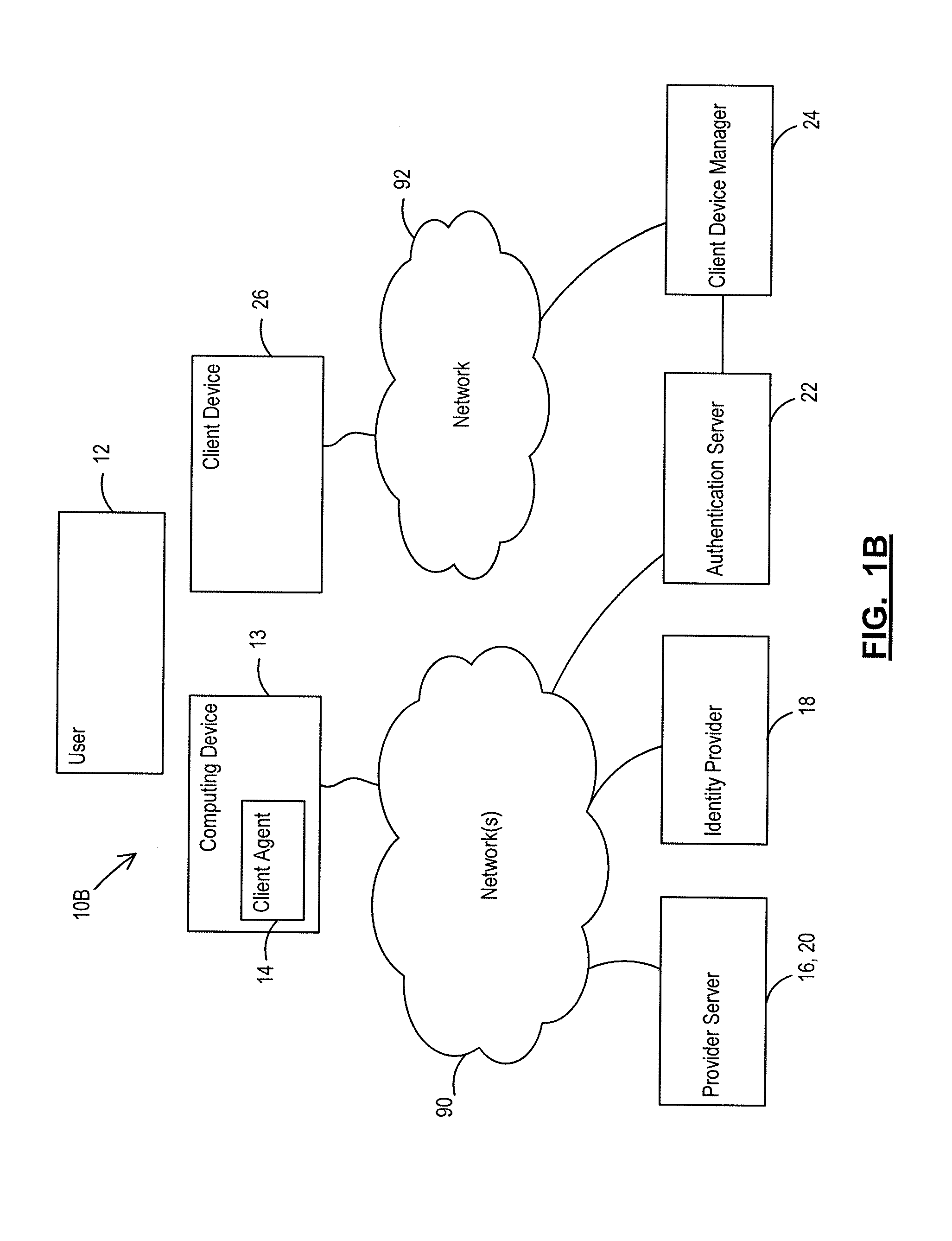Methods and systems for using derived credentials to authenticate a device across multiple platforms
a technology of derived credentials and authentication requests, applied in the field of system security, can solve the problems of users re-using passwords, reducing security, and frustrated users with the number of passwords they must maintain
- Summary
- Abstract
- Description
- Claims
- Application Information
AI Technical Summary
Benefits of technology
Problems solved by technology
Method used
Image
Examples
examples
[0133]For the purposes of illustration, several exemplary embodiments will now be described with reference to specific implementation scenarios.
[0134]In a first scenario, an online game server may require that players protect their account with a ‘what you have’ credential. The user 12 has previously registered a username and password, vetted with an existing e-mail address. The game system (i.e. provider server 16) authenticates the user 12 with their existing username and password via a web page, and then redirects the user's web browser to the authentication server 22 to register the user's client device 26. The authentication server 22 completes the registration process (as described in more detail above), and conducts identity proofing by sending a one-time code to the client's registered email address (supplied by the game system 16). Once verified, the authentication server 22 associates the client device 26 with the provider server 16 and the username. Accordingly, the clien...
PUM
 Login to View More
Login to View More Abstract
Description
Claims
Application Information
 Login to View More
Login to View More - R&D
- Intellectual Property
- Life Sciences
- Materials
- Tech Scout
- Unparalleled Data Quality
- Higher Quality Content
- 60% Fewer Hallucinations
Browse by: Latest US Patents, China's latest patents, Technical Efficacy Thesaurus, Application Domain, Technology Topic, Popular Technical Reports.
© 2025 PatSnap. All rights reserved.Legal|Privacy policy|Modern Slavery Act Transparency Statement|Sitemap|About US| Contact US: help@patsnap.com



